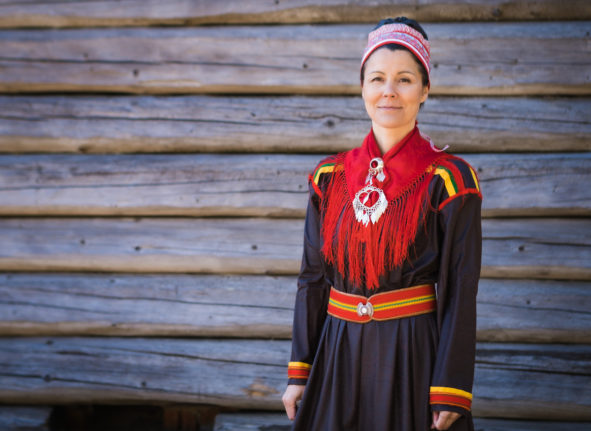Grey skies, rainy days, a wide-mouthed river, and a love for English pubs. At first glance, it’s no wonder that Gothenburg has long held the nickname of Sweden’s own “Little London”, or Lilla London.
But what are the origins of this British title?
“The nickname ‘Little London’ was first used in a newspaper in 1766,” explains Håkan Strömberg, educational officer at the Museum of Gothenburg.
“The Brits were the largest immigration group during the 1700s and early 1800s, mainly because Sweden was a country close by, it was economically underdeveloped compared to England and Scotland and had a lot of raw materials. To put it simply, could make some money here.”
The city’s reputation as a British enclave dates back to the 1700s when trade brought many foreign influences to the Västra Götaland region.
As merchants and shipbuilders like Charles Chapman, David Carnegie, and James Dickson moved to the area, local residents began to notice a growing list of similarities between the Swedish port city and the British capital.
Indeed, even one of Sweden’s most renowned scientists, Carl Von Linné, is said to have commented on the similarities between the two cities when he visited Gothenburg in the 1700s.
“Being a group of upper-class immigrants, the British merchants made sure they had access to all the good things from their home country. But the feeling of Gothenburg as a Little London was most likely something the Swedish citizens had, rather than the Brits,” adds Strömberg.
The historical roots that connect the UK and Gothenburg are still evident today, with many spots in the city still alluding to British names, like Chalmers University – founded by the son of a wealthy Scottish industrialist, or Chapmans Torg – named after a family of sailors and shipbuilders once well-established in the area.
Catriona Chaplin, a British expat turned Gothenburger, only began to see the similarities and know of the nickname after relocating to the region for work. Growing up in Leicestershire, central England, she’d never heard of London’s Swedish sibling city.
“We came to Gothenburg 17 years ago. We’d never heard about [the nickname] until we moved here, but there is a bar on Avenyn called Lilla London, so that’s when we started to know about it,” she says.
Today, as the membership secretary of the British Club of Gothenburg, she brings a taste of the British Isles to life in Gothenburg.
The Club, which organises social events like concerts, quiz nights, and theatre performances, has a membership base of nearly 200 families. And although less than 0.5 percent of Gothenburg’s population today was born in the UK, the club welcomes members from a range of nationalities.
In fact, the only membership requirement is having some kind of interest in the UK, be it from a cultural standpoint, a past tourist experience, or a love of the language.
“People come to the British Club just to socialise in their native language. It’s also about the culture, like the banter, the jokes and playing on words,” she says.
Although the city’s British roots run deep, questions remain about modern-day Gothenburg’s status as “Little London”.
To some, the west-coast maritime hub’s industrial legacy, strong working-class culture, and amiable nature are reminiscent of a different English city. “They ought to call it ‘Little Liverpool’!” says Chaplin, with a smile.
Lasting Landmarks
Evidence of Gothenburg’s British connections can be found in many of its landmarks, shops, and of course, pubs. Some of the historical hotspots still apparent today include:
Haga – The British ‘hood
The area of Haga, just outside the old city, was once considered a slum, but changed character thanks to British philanthropist Robert Dickson (1782-1858), who built public baths, a library, and other landmarks with the typical red bricks found in Britain at the time.
St Andrew’s Church
A key part of the British community is the Anglican church of Saint Andrew’s, also in Haga. Dedicated to the patron saint of Scotland, it was built and to date funded by ‘The British Factory’, a British society founded in the 1700s to help expats in Gothenburg that remains active even today.
The Victorian gothic style of the church is in line with the architectural trend in Britain at the time.
John Scott – a legend among Gothenburgers
One of Gothenburg’s most well-loved establishments is John Scott’s, a local pub chain named after Pastor John Henry Scott, an Englishman and prominent landowner in 18th century Gothenburg.
The “English quarter”
The square of buildings delineated by Teatergatan, Storgatan, Kungsportsavenyn and Vasagatan was once known as the city’s English Quarter. The buildings in this neighbourhood are influenced by British design, and the original landowners were in fact English pastor John Henry Scott and his wife, Jacobina.
By Alexander Maxia, Lisa Ostrowski and Sanna Sailer



 Please whitelist us to continue reading.
Please whitelist us to continue reading.
Member comments